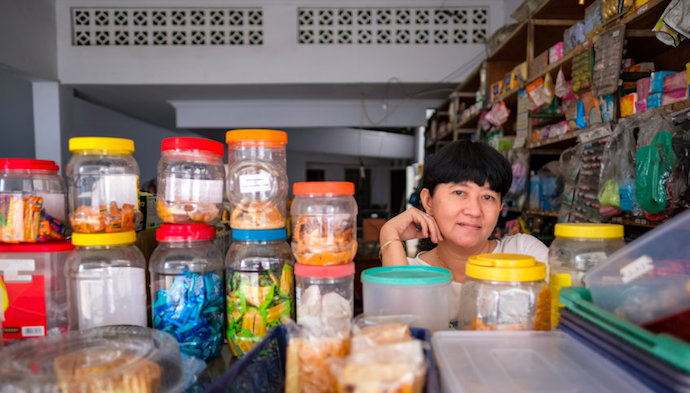
Suppose you see the words “Southeast Asia” in connection with e-commerce. In that case, you probably think of Singapore’s savvy online shoppers or the Filipino e-commerce boom that’s making Manila one of the world’s digital hubs.
And for sure, these markets are exciting, essential and will continue to attract investment for a long time to come. But one country is often left off the list of the region’s digital powerhouses: Indonesia.
And that omission is likely to prove an expensive one for companies who do not capture the opportunities this rapidly expanding market has to offer.
Indonesia’s e-commerce is a growing market
In 2020 alone, Indonesia’s digital economy grew by 11 per cent to a value of US$44 billion. And the digital economy already contributes four per cent to their national GDP. This will come as no surprise to seasoned observers of Indonesia’s digital economy, and particularly its payment sector, which is both thriving and innovative.
In May 2021, ride-hailing and payments giant Gojek and marketplace Tokopedia, Indonesia’s two most prominent startups, merged to form settlements and e-commerce giant GoTo.
With more than 100 million active users, the new group is opening up Indonesian and Southeast Asian e-commerce to new users, demographics and markets.
Also Read: Europe is still in the shadow from an Asian startup point of view: Ubisoft’s Catherine Seys
Indonesia’s preferred ways to pay
It would be a mistake to believe that GoTo, or its payments arm GoPay, are the only kids on the block. There are almost 150 million Indonesians with internet connections.
This massive online population uses e-wallets and a wide range of bank-transfer apps (contributing to almost 30 per cent of online transactions) and a range of other local payment methods (seven per cent). Indonesians even use cash in around 13 per cent of online purchases.
One of the modern Indonesian payment methods is the local bank transfer app Jenius, with 3.3 million active users, up from 1.6 million just two years ago.
Similarly, Indonesian e-wallet LinkAja recorded a 65 per cent increase in the rate of new-user sign-ups in 2020. During that time, it quadrupled its transaction volumes and grew its revenue by 250 per cent.
Even the Indonesian credit card market has a local twist. Used in just 34 per cent of online transactions, cards are mainly issued by global giants such as Visa and Mastercard.
But the cards used in 13 per cent of transactions are issued by local schemes. This is a substantial chunk of the market which merchants entering the Indonesian e-commerce sector would miss if they only supported the standard payment methods for developed markets.
So, what should merchants, and the service providers who support them, do to prepare themselves for a successful entry into Indonesia’s booming e-commerce and online payments markets? The key is, as ever, localisation.
Also Read: Capturing the next frontier opportunities in the Indonesian e-commerce landscape
Traversing a dynamic e-commerce landscape
The most apparent way merchants and others entering the Indonesian market need to adapt is by optimising mobile.
According to the International Telecoms Union (ITU), just four per cent of Indonesians have a fixed-broadband subscription, while 89 per cent have a mobile-broadband subscription.
And almost 100 per cent of the adult population has a smartphone, while just 19 per cent has a tablet computer.
Language is also an essential aspect of localisation for Indonesians. Over 90 per cent of the population speak and read Indonesian. The most commonly spoken language is Javanese, spoken by almost a third of the country’s inhabitants.
It may be worth noting that the English Proficiency Index, which ranks countries by the proportion of their citizens who speak and read fluent English, puts Indonesia at 74 out of 100.
Probably the most critical requirement, however, is to localise payment methods. Only 29 per cent of all online transactions in Indonesia are paid using globally recognised credit cards. And even this may be an overestimate.
With smartphones now ubiquitous and the uptake of e-wallets, bank-transfer apps and other local payment methods (LPMs) surging, the Indonesian payment market seems set to diversify rapidly.
Also Read: The 27 Indonesian startups that have taken the ecosystem to next level this year
To win in such a fast-evolving environment, merchants and payment service providers (PSPs) must work with a partner that understands local payment culture, preferences and e-commerce conditions.
That’s where PPRO can help. Our local payments infrastructure gives PSPs fast, compliant and seamless access to Southeast Asian local payment methods. All in one place.
–
Editor’s note: e27 aims to foster thought leadership by publishing views from the community. Share your opinion by submitting an article, video, podcast, or infographic.
Join our e27 Telegram group, FB community, or like the e27 Facebook page
Image credit: willyarrows
The post How can European companies win in Indonesia’s e-commerce market? appeared first on e27.

